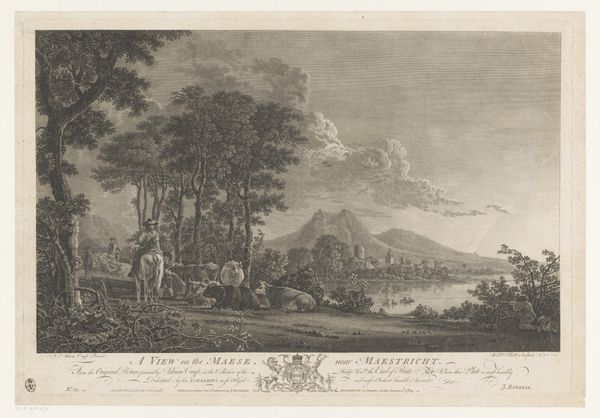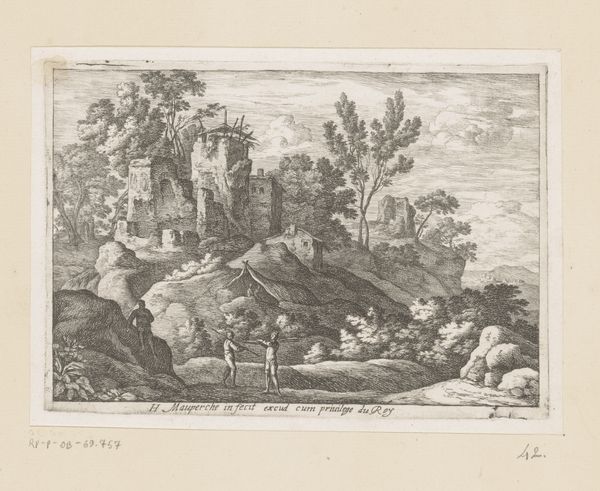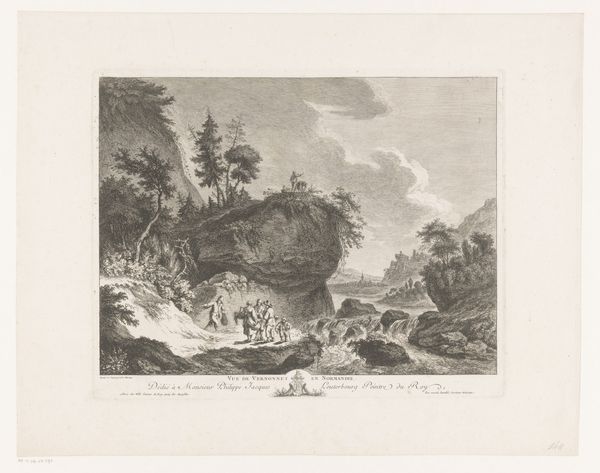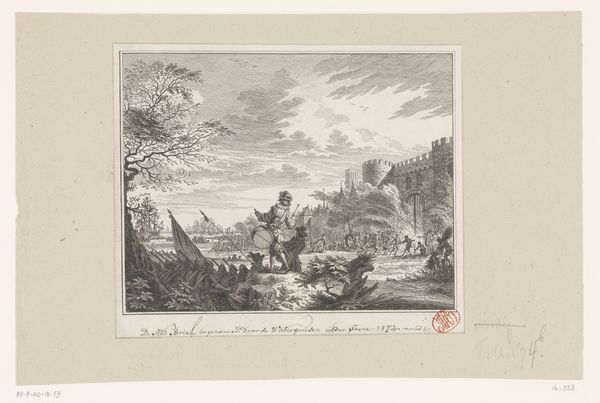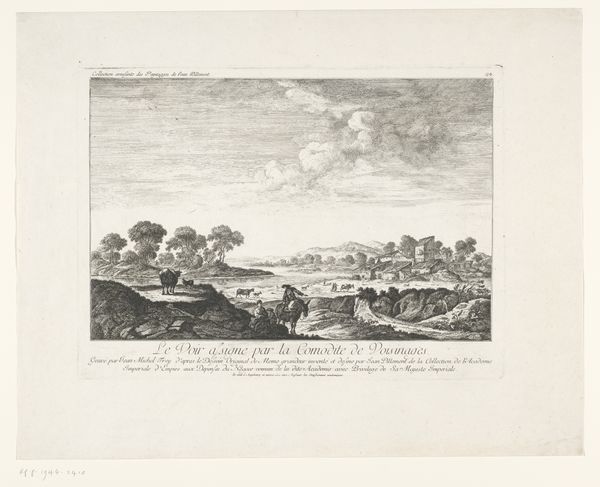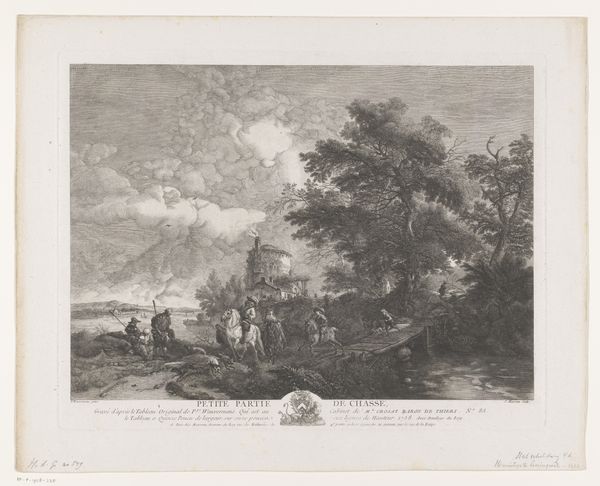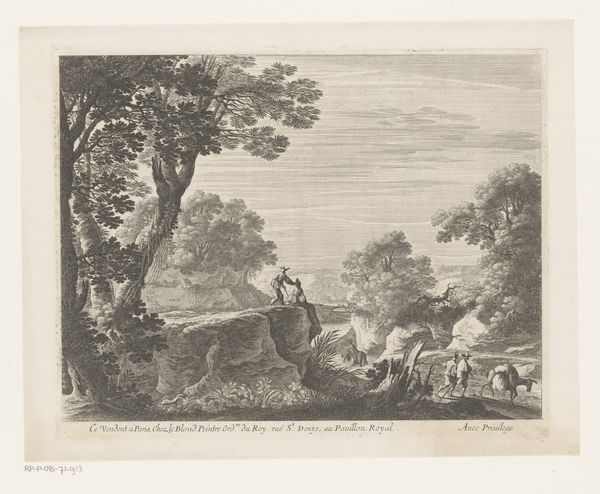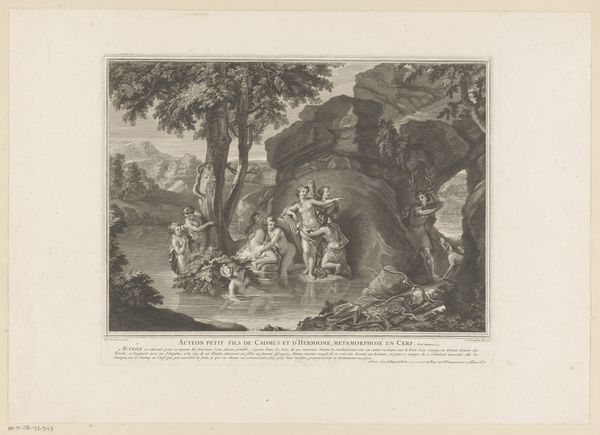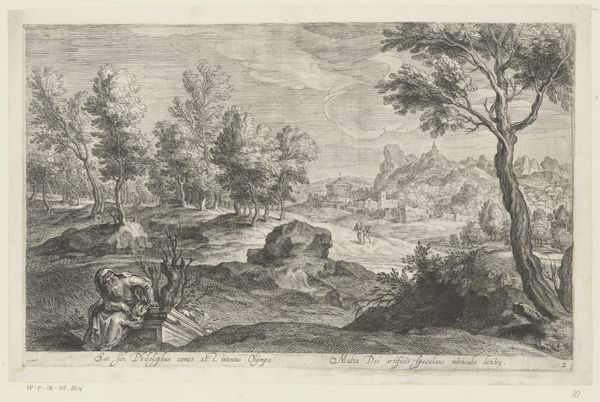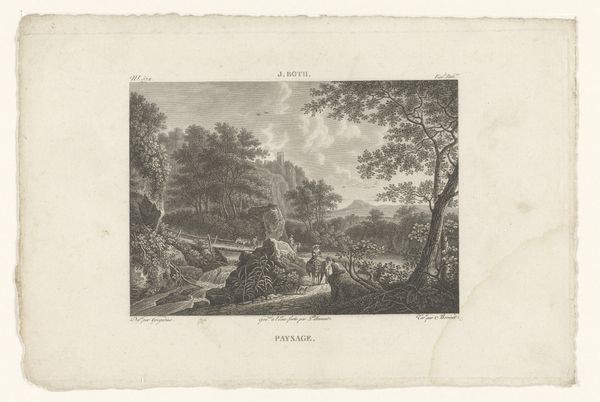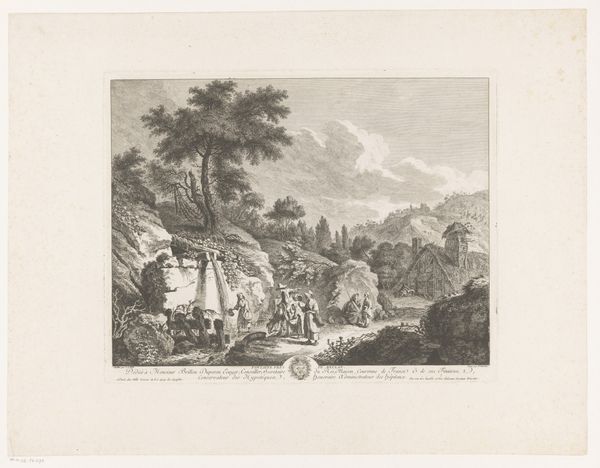
print, engraving
#
baroque
#
dutch-golden-age
# print
#
old engraving style
#
landscape
#
engraving
Dimensions: height 161 mm, width 191 mm
Copyright: Rijks Museum: Open Domain
Curator: Welcome. Before us hangs an intriguing piece titled "Antropomorf Landschap", created somewhere between 1670 and 1775. It's attributed to Pieter Schenk and we can appreciate the skillful engraving work he used to bring this scene to life. Editor: Whoa, first glance? This is like a daydream sketched onto copper. Ethereal, yet with little figures puttering about like ants. There’s this crazy anthropomorphic vibe that makes it both beautiful and faintly unsettling. Curator: Indeed. Schenk’s landscape aligns with the Dutch Golden Age tradition but introduces that unique, rather Baroque fascination with symbolism. Landscapes during this era served as reflections of broader societal and even moral themes. Editor: I see the landscape sort of looming over everything... It looks like an actual face peering back. A rocky forehead, cascading waterfall for a nose... Is it me or does that kind of mess with the power dynamics? Like nature’s judging those tiny folk below. Curator: The ‘face’ could be a symbolic gesture towards humanity's place within the natural order—a common theme of the time—reflecting upon nature's capacity to observe. Or maybe it speaks to the era's growing interest in natural sciences, reflecting attempts to decipher patterns in the world. The rise of the bourgeoisie in the Netherlands might've shifted how they viewed themselves concerning their surroundings. Editor: I'm totally vibing with that! Almost like Mother Nature saying, "I'm watching you" while the details, these tiny figures, are doing their best to survive and make their mark. Makes me question, what sort of mark am I trying to make? Heavy! Curator: Schenk created more than just a pleasing image; he engaged viewers in questions about their relationship with the world around them. This is held as an exemplar of Golden Age sensibilities here at the Rijksmuseum. Editor: Totally makes you pause, doesn't it? It takes a second to realise you're seeing yourself in nature. And for all our 'progress', it quietly suggests the world’s going to keep on spinning, face or no face. Beautiful piece.
Comments
No comments
Be the first to comment and join the conversation on the ultimate creative platform.
